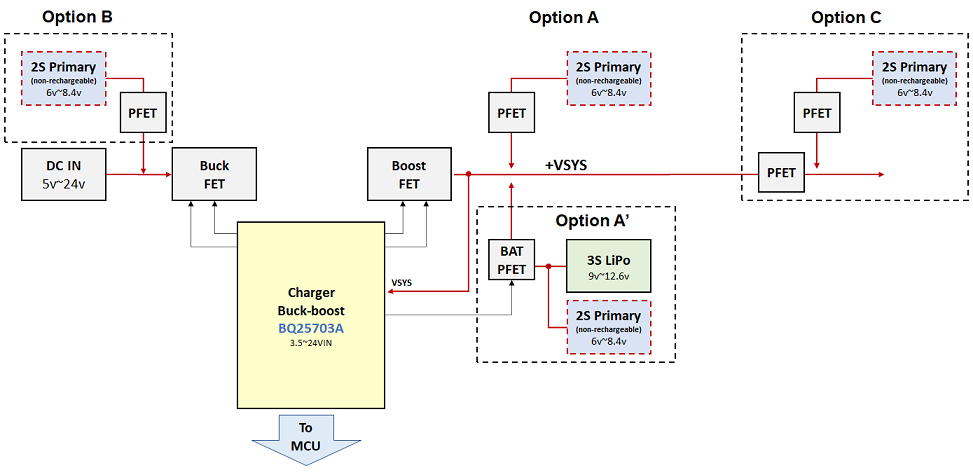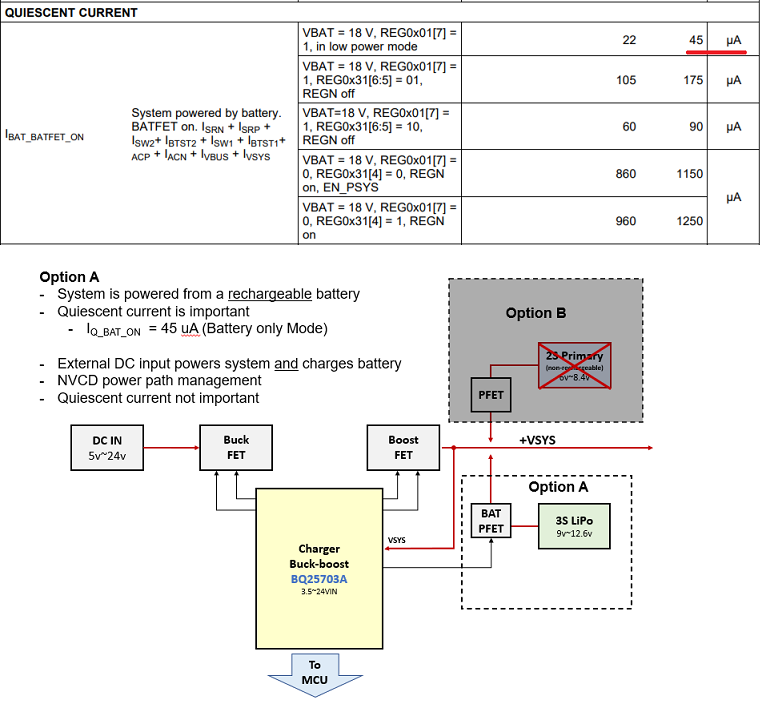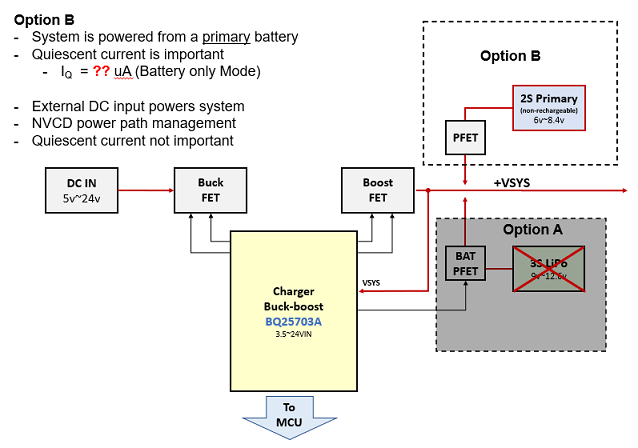Other Parts Discussed in Thread: BQ25713
Hello Support Team
I am designing a power stage that has dual battery inputs, one rechargeable (3S) and a second non-rechargeable (2S)
- Note: only ONE battery is present at a time in the system.
- There is also a DC adapter input (5v~24v) for charging and system power.
According to the #BQ25703A datasheet, and if I understand correctly, we have 3 cases
- Adapter Only: the output of the charger (+VSYS) is regulated to the default minimum system voltage.
- Battery Only: the device is in battery supplement mode. +VSYS - Vbattery = VDS of BATFET.
- Adapter and Battery: if Vbattery > VSYS_min, then VSYS output will be regulated to around 160 mV above Vbattery when BATFET is off (no charging or no supplement current).
Now, I am looking at three ORing options below, and I have some questions pertaining to BQ27503A quiescent current consumption in the case when there is NO charger connected.
Option A: To minimize losses and save battery life, my first thought is to place the primary battery and control a P-FET after the #BQ25703A output at +VSYS.
The basic idea is to
- Force Charger in Hi-Z state
> Drive CELL_BATPRESZ low to indicate battery removal
> Drive ILIM_HIZ Low - Set VSYS_min = 9.0v,
- If external DC adapter is connected, P-FET is turned-off and #BQ27503A regulates VSYS
#1) Is it possible to power +VSYS from primary battery only, i.e. adapter is NOT connected and CELL_BATPRESZ = low?
#2) presumably #1 works, can you please advise on the correct steps to achieve lowest quiescent current?
#3) As per datasheet Iq_max = 45µA in low power mode, can you please confirm this is the same as #2 above?
Option A': Since in our application, only a single battery is present, extending the concept,
#4) Is it possible to share BATFET path for the primary battery as well?
- By forcing #BQ25703A into HI-Z state, according to datasheet BATFET can be turned ON/OFF via BATFETOFF_HIZ register - so this works when there is NO adapter
#5) Presumably #4 above works, what is the behavior of the BQ25703A when adapter is connected?
#6) What are the correct settings to ensure BATFET remains OFF when adapter is connected?
Option B: place the primary battery before the #BQ25703A in ORing configuration with the adapter. But the efficiency is reduced.
Alternatively, I looked at the #BQ25713 pass through mode (PTM) and it might just do the trick.
#7) Can you please confirm quiescent current in PTM?
Option C: involves adding extra P-FET to isolate the #BQ25703A when no adapter is connected.
This seems the most promising approach for Zero Iq. though, the Iq savings may be diminished with extra circuitry required to isolate signals from the MCU.
Thank you for your support.
Best,
AJ





